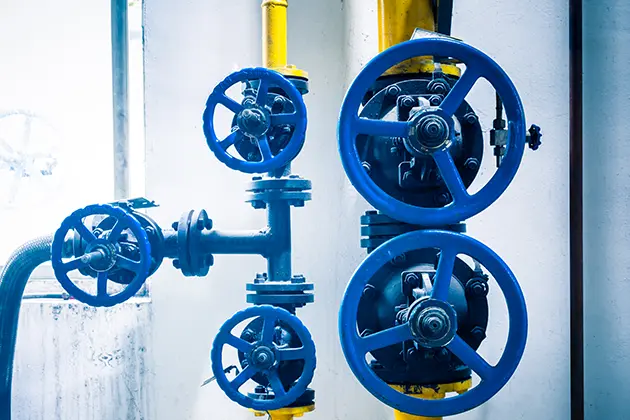Selecting the right components for industrial systems is crucial for optimal performance and longevity. Ball valves play a vital role in controlling fluid flow, making their durability a key factor in system efficiency. Choosing long-lasting ball valve parts ensures reliable operation, reduces maintenance costs, and minimizes downtime in industrial applications.
The lifespan of ball valves directly impacts the overall functionality of industrial processes. High-quality, durable components withstand harsh conditions, extreme temperatures, and corrosive substances. This resilience translates to fewer replacements, enhanced safety, and improved productivity. By investing in reliable ball valve parts, industries can achieve better control over their operations and maintain consistent performance over extended periods.
Careful consideration of ball valve design and materials is essential for maximizing system efficiency. Robust construction and high-grade materials contribute to longer valve lifespans, reducing the frequency of maintenance and replacements. This proactive approach not only saves time and resources but also enhances the overall reliability of industrial processes.
Key Takeaways
- Long-lasting ball valve parts reduce maintenance costs and system downtime
- Durable components enhance safety and productivity in industrial applications
- Careful selection of valve materials and design improves overall system efficiency
The Role of Durability in Ball Valve Performance
Durability is a critical factor in ball valve performance, impacting longevity, reliability, and overall system efficiency. It encompasses material selection, valve design, and maintenance practices.
Impact of Material Selection on Ball Valve Longevity
Material choice significantly influences ball valve durability. Stainless steel offers excellent corrosion resistance and strength, making it ideal for harsh environments. Brass and bronze provide good durability at a lower cost, suitable for less demanding applications.
Corrosion-resistant materials extend valve life by preventing degradation from harsh chemicals or environmental factors. High-quality materials also withstand wear and tear better, reducing the frequency of repairs and replacements.
For high-pressure or high-temperature applications, specialized alloys may be necessary to ensure longevity and safety. These materials maintain their properties under extreme conditions, preventing failures and leaks.
Significance of Valve Design in Operational Reliability
Valve design plays a crucial role in durability. Well-engineered ball valves distribute stress evenly, minimizing wear on individual components. This design approach extends service life and improves overall performance.
Key design elements include:
- Robust seals to prevent leakage
- Reinforced stems for increased torque resistance
- Precision-machined balls for smooth operation
These features contribute to better reliability in demanding industrial settings. Properly designed valves also facilitate easier maintenance, reducing downtime and operating costs.
Maintenance Practices to Prolong Service Life
Regular maintenance is essential for maximizing ball valve durability. Routine inspections help identify potential issues before they escalate into major problems. This proactive approach prevents unexpected failures and extends valve lifespan.
Maintenance tasks include:
- Periodic cleaning to remove debris and contaminants
- Lubrication of moving parts to reduce friction and wear
- Tightening of connections to prevent leaks
Implementing a preventative maintenance schedule based on manufacturer recommendations and system requirements is crucial. This approach ensures valves operate at peak efficiency and reliability throughout their service life.
Proper valve lubrication is particularly important. It reduces friction between moving parts, minimizing wear and extending operational life. Using appropriate lubricants for specific applications and environments is essential for optimal performance.
Strategies for Optimizing Industrial System Efficiency
Implementing effective strategies can significantly enhance the performance and longevity of industrial systems. These approaches focus on leveraging advanced technologies, minimizing risks, and managing components like ball valve parts for optimal results.
Incorporating Advanced Technologies for Enhanced Performance
Industrial systems benefit from integrating cutting-edge technologies. Pneumatic actuated ball valves improve automation and control in chemical processing and oil and gas operations. Smart sensors monitor valve performance, detecting issues before they escalate. Predictive maintenance software analyzes data to schedule servicing, reducing unexpected downtime.
Advanced cleaning agents combat mineral buildup, extending equipment life. In agriculture, precision flow control systems optimize resource usage. Upgrading to high-performance materials in valve construction boosts durability in harsh environments.
Reducing Operational Risks through Proper Installation and Testing
Proper installation and rigorous testing are crucial for system reliability. Skilled technicians ensure correct valve placement and alignment. Pressure testing verifies seal integrity, preventing leaks. Regular quality checks identify potential weak points.
Standardized installation procedures across facilities maintain consistency. Comprehensive staff training on equipment handling reduces human error risks. Implementing strict safety protocols protects workers and equipment during maintenance.
Periodic system audits assess overall performance and compliance with industry standards. This proactive approach minimizes security risks and enhances safety in high-stakes environments like chemical processing plants.
Cost Savings with Effective Management of Ball Valve Parts
Strategic management of ball valve parts yields significant cost benefits. Stocking critical spares prevents extended shutdowns during emergencies. Standardizing parts across systems simplifies inventory and reduces procurement costs.
Implementing a robust preventive maintenance schedule extends component lifespan. This approach minimizes the frequency of plant shutdowns for repairs. Partnering with reliable suppliers ensures access to high-quality replacement parts when needed.
Regular cleaning and lubrication of valve components prevent wear and tear. Tracking part performance data helps optimize replacement schedules. Investing in durable, corrosion-resistant materials for key components reduces long-term replacement costs.
Conclusion
Selecting long-lasting ball valve parts for industrial systems is crucial for optimal performance and cost-effectiveness. High-quality components ensure reliable operation, reduce downtime, and minimize maintenance needs. Investing in durable ball valve parts ultimately leads to improved safety, efficiency, and longevity of industrial processes. Making informed choices about valve materials and designs tailored to specific applications yields significant long-term benefits for industrial operations.










